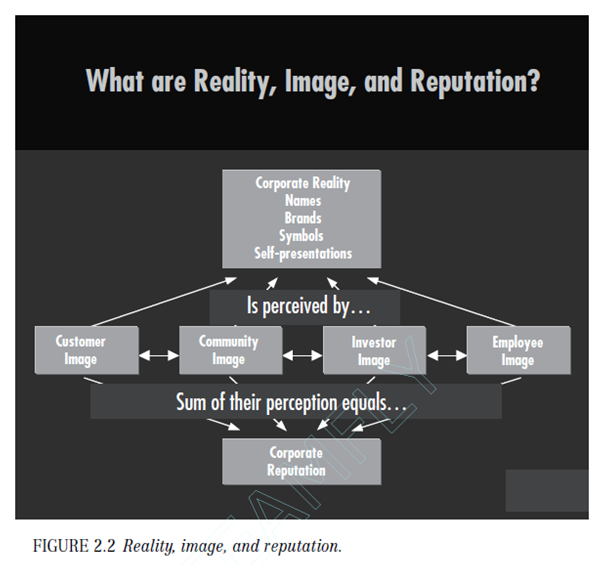Corporate Image, Reality, Identity, and Reputation
Communication can be used to enhance a company's standing through image and individuality. Messages must be prearranged cautiously and communicated through the correct channels. For example, Philip Morris used advertising about its corporate philanthropy feeding the hungry in the United States and abroad to enhance its standing with television viewers, particularly those viewing family-friendly programs, who may have had a more negative awareness of the company than younger, single consumers.
Image is an indication of the organization's actuality. It is the corporation as seen through the eyes of constituent. Thus, a company can have different descriptions with different constituency. For example, forest products companies may have a very unconstructive image among environmental activist, but a very optimistic image among employees of firms occupied in this endeavor. Corporate communications departments conduct research to understand different constituents' desires and attitudes. They then try to work on improved communications with those constituents to enhance their image.
Realism, on the other hand, is the visual demonstration of a company's figure as seen in the stationery, uniforms, buildings, brochures, corporate logo, and advertising that form the company's individuality. Identity consult firms work with companies to made logos and other manifestations of individuality. These firms increasingly rely on business schools to make available personnel for this growing field.
Certainty combines with image to create standing, which is a product of how all constituencies view a company. A company's standing may be its most precious asset. Companies with physically powerful reputations usually command premium price for their products, have more stable revenues, and are given more autonomy in a disaster. For example, Johnson & Johnson was able to regain its Tylenol market share after the poison scandal of the mid-1980s due to fast corrective action, the public's long-standing faith in the corporation, and its excellent reputation.
Constituencies, as describe previous, are groups with awareness in your organization. Primary customers, shareholders, constituencies include employees, and communities. Although communications are most usually targeted to primary constituencies, secondary constituencies are also significant to organizations. Some examples of secondary constituency are media, suppliers, government, and creditors. Remember that communications intended for one constituency often reach others. Moreover, constituency can have opposing happiness and different perception of a company. For example, although cutting employee reimbursement may be viewed absolutely by a company's stockholders, its employees will most likely have an unconstructive sight.

Constituency Responses
After communicating with a electorate, you must assess the results of your communication and determine whether the communication had the desired result. For example, did sales rise in reaction to a promotion campaign? After influential the results, you must determine how you will respond. Has your standing changed? Do you need to change your communications channel? Thus the cycle continues.